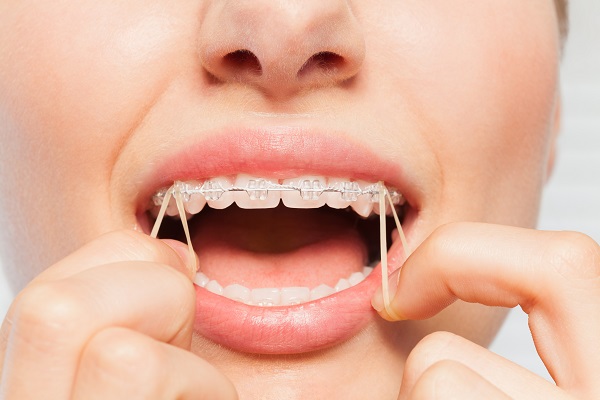The correction of overbites, underbites, and other misalignments of teeth lie at the heart of orthodontics. While representing a rite of passage for many a teenager, braces constitute a principal approach to straightening teeth and the jaw. Here, we describe one of the components of braces, the ligature ties for braces. These parts come in various materials, forms, and colors. The choice of ligature will turn on the specifics of the condition being treated, the desire for the patient to achieve a satisfactory level of aesthetics and comfort, and cost. Below, we explore the use, appearance, and care of ligature ties for braces.

Understanding the Parts of Braces
To grasp the role of ligatures in orthodontics, you need to know what goes into braces and how they work. Braces place pressure on teeth to move them into proper alignment and shape the bone in the teeth. Tight-fitting parts ensure the necessary amount of force for braces to work effectively.
A system of braces includes:
- Brackets: As the most visible part of the braces (apart from the colorful bands), brackets hold the archwire. Your orthodontist uses either bands or a bonding material to attach the brackets to the face of the teeth. To make the brackets less visible or obvious, manufacturers offer stainless steel, ceramic, or tooth-colored brackets. In some cases, the orthodontist may mount the brackets in the inside of the tooth so that the brackets are generally not visible.
- Archwire: This represents the movement mechanism for the braces. The archwire feeds through the brackets and guides the teeth. Tooth-colored archwires are an alternative to the traditional stainless steel ones.
- Ligatures: As you’ll read more fully below, the ligatures hold the archwires to the brackets.
Why Do You Put Rubber Bands on Braces?
For braces to effectively align the teeth, you need a force that guides the teeth and jaw into proper alignment. Orthodontic rubber bands, often called elastic ligatures, connect the brackets to the archwire. With this connection, the braces can apply the needed force to move the teeth. Elastic ligatures pull or push the teeth in the appropriate direction. These have gained popularity for their flexibility and for not being cumbersome when placed on the mouth.

Ligature rubber bands come in many colors. The choices may depend on personal tastes such as allegiances to school or sports teams, or wanting the braces not to appear prominent. Usually, these will come on sticks that may roughly resemble small, replica guitars.
A different kind of rubber band for use with braces goes by the name “interarch rubber bands.” Rather than move teeth along the gum line, these elastic bands move the jaw bones so that the teeth will eventually achieve bite alignment. The bands connect the top and bottom brackets with hooks.
What Do Ligature Wires Do?
Ligature wires perform essentially the same function as their elastic counterparts. The material that ties the archwires to the brackets is often stainless steel. As such, it has generally the same or a similar color as the brackets and the archwire. Those who wear ligature wires may like its ability to blend into the rest of the mouth and not be as noticeable, especially from far distances.
If you wear a ligature wire, you’ll notice its inflexibility, relative to elastic ones. However, this factor may afford an advantage in using steel ligature wires over rubber bands. Specifically, the former typically fully engage, or tie, the archwire to the back of the bracket slot. By contrast, the engagement from elastic ligatures is not complete and leads to less force being applied to the teeth. Consequently, users must replace rubber bands generally every three to five weeks.
Also, steel ligature ties for braces may prove more optimal for patients who have twisted or turned teeth. The wire is more reliable in securing the arch to the bracket.
How to Maintain the Effectiveness of Ligature Ties
Before the time of replacement, taking care of the ligatures involves proper oral habits. Avoid eating or biting hard foods, such as lollipops, hard candy, and popcorn. You might break or loosen ligatures and other parts of the braces with a diet of hard foods, or by chewing on fingernails or excessive biting of teeth.
Certain products negatively affect the aesthetics of elastic ligatures. The nicotine from smoking leaves a yellowish stain on ligatures. Other foods and sauces responsible for leaving stains on ligatures include:
- Red wine
- Soy sauce
- Berries
- Balsamic vinaigrette dressing
- Curry
- Dark sodas
- Beets
- Coffee
Some of these selections, especially the sugar in soda, can impair oral health by providing a catalyst for bacteria that can erupt into gum disease. Consider light blue or gray elastic ligature ties, as they are less likely to stain than clear ones.
Fixes for Orthodontic Ligature Ties
When ligatures become worn or lose their grip, an immediate trip to the orthodontist is not always in the offing. For a loosened band, use a sterile set of tweezers to remove it. A “Q-tip,” the backside of a spoon, or an eraser can bend a protruding (and irritating) ligature wire back into place. Braces wax may alleviate any continuing discomfort from the out-of-place ligatures.
Typically, the orthodontist installs the ligature ties, whether rubber or steel. Report broken ligature ties for braces promptly to the orthodontist and schedule a time for their replacement or repair. Replacement or fixes also occur by the orthodontist at routine patient visits, such as when the brackets or archwire need tightening.
Conclusion
For ligature ties for braces to work effectively, you need to exercise proper care and maintenance. This includes watching what you eat and the condition of the ligatures. Also, you should understand the factors in choosing which type of ligature, whether metal or elastic, is right for your situation. Please let us know which type of ligature you have chosen, and what they have done for you and your oral health.

Leave a Comment